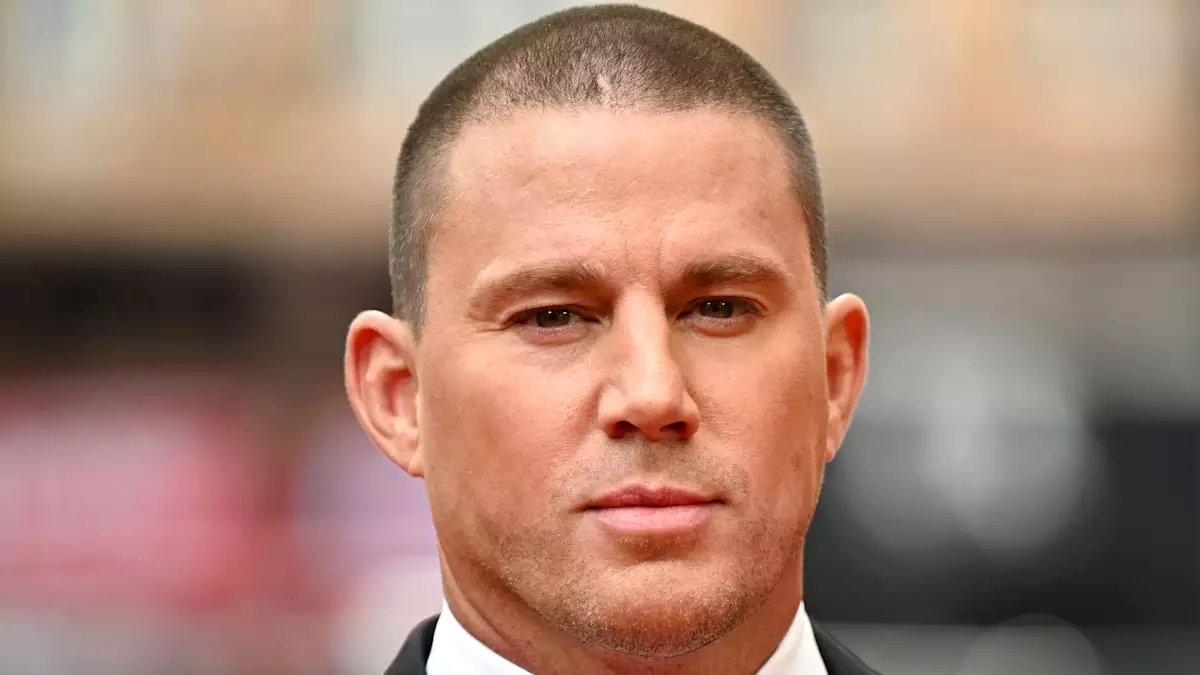In the competitive world of Hollywood, actors often find themselves pushed into dramatic physical transformations to capture the essence of their characters. Channing Tatum, known for his athletic build which has graced the screens in films like *She’s the Man* and the *Magic Mike* series, is now embarking on an extraordinary journey of weight fluctuations for his upcoming roles. His recent social media posts vividly illustrate the challenges and pressures actors face as they reconfigure their bodies for the screen, and they serve as a testament to the extreme lengths Tatum is willing to go to deliver authentic performances.
Tatum’s approach to weight manipulation is nothing short of astonishing; in a candid post, he revealed a staggering weight difference of 63 pounds while gearing up for multiple projects. Sharing images showcasing his evolving physique, he noted his fluctuation from 205 pounds to 235 pounds for a film titled *Josephine*, and ultimately down to 172 pounds for another project, *Roofman*. This drastic transformation highlights not only his aesthetic dedication but also the physical toll that such swings in body mass can impose.
Bravery or Recklessness?
What stands out in Tatum’s candidness is his self-awareness regarding the complexities of these body changes. While he expresses gratitude toward his genetics and his support team, he also acknowledges the difficulties and risks involved. In one striking remark, he stated, “I won’t be doing any more fat roles, haha. It’s too hard on the body.” This comment opens up broader discussions about the nature of art in cinema and the ethics surrounding extreme body transformations.
Are the artistic sacrifices actors make truly worth it, or are they a form of recklessness that jeopardizes their long-term health? Tatum’s experiences echo a larger trend in which celebrities like Christian Bale have also faced significant physical ramifications for their art. Bale’s transformations, including gaining and losing weight at an alarming rate, have led him to reflect on the mental and physical toll such extremes can invoke. This begs the question: should the industry continue to endorse such drastic measures for the sake of authenticity?
The Responses of Industry Peers
As Tatum documented his journey, reactions from fellow celebrities also poured in, with some expressing admiration while others displayed concern. The remarks ranged from enthusiastic acknowledgments like “Wow!” from Padma Lakshmi to cautionary advice from Natasha Lyonne about the risks of such extreme weight changes. This spectrum of responses highlights the divide in perceptions about what is considered acceptable in the pursuit of authenticity in performance.
The fact that such physical transformations can lead to acclaim, yet simultaneously risk an actor’s health, reflects a paradox within the film industry. Viewing it through a critical lens prompts one to consider the kind of environment that fosters such extremes. Are the filmmakers and producers perpetuating a cycle where appearances dictate roles, ultimately placing actors in harmful situations to meet these standards?
The Metaphor of the Body
Tatum’s fluctuating physique can be seen as a metaphor for the larger struggles in Hollywood — the constant push for perfection, the pressures to comply with industry standards, and the ultimate sacrifices made in the name of art. It underscores the often invisible battles with self-image and the societal expectations placed on male and female actors alike. As spectators, we are invited to reflect not only on the nature of acting but also on the extremes individuals are willing to push themselves for their craft.
Ultimately, Channing Tatum’s latest transformations serve as a window into the intricate and often troubling relationship between health, artistry, and audience expectations in Hollywood. Whether seen as commendable dedication or reckless bravado, his experiences highlight a complex dialogue about the human body and the evolving expectations of performance.

